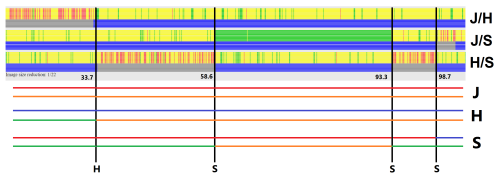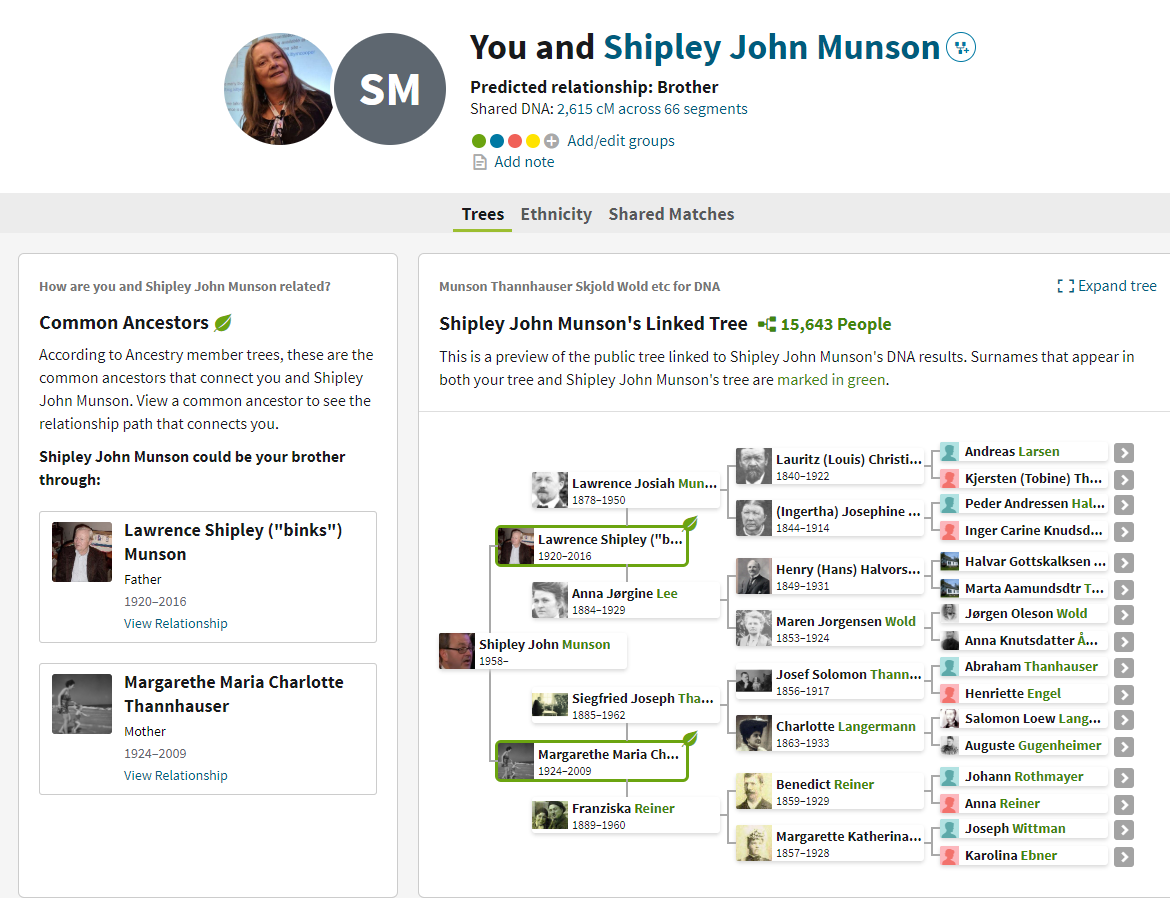

This is also why we map our matching segments to those ancestors by triangulating with cousins – to identify which pieces of our DNA came from which ancestor. Everyone inherits different amounts of segments of DNA from our common ancestors. This, of course, is exactly why we test as many relatives as we can. Testing everyone in your family available from the oldest generation is absolutely critical. In this fourth scenario, the parent didn’t receive any of the segment from the GGGGG-grandparent, but maybe their brother or sister did, which is why you want to test aunts and uncles. There is no such thing as “skipping generations.” Of course, the child can only inherit what the parent has inherited from that ancestor, and if that particular segment was gone in the parent’s generation, or generations before the parent, the child certainly can’t inherit the segment. Now, think of these three scenarios as three different siblings inheriting from the same parent, and you’ll understand why siblings carry different amounts of DNA from their ancestors. In this third scenario, you inherited all of the DNA from that ancestor as your parent. In this second scenario, you inherited nothing of that segment from your GGGGG-grandparent. In the above example, you inherited one-tenth of the segment from your GGGGG-grandparent which was one-third of the DNA that your parent carried in that segment from that ancestor.Ī second example is every bit as likely, shown below. How Does Inheritance of Ancestral Segments Actually Work?įor you to inherit a particular segment from one GGGGG-grandparent, the inheritance might look something like this. In other words, your ancestor’s DNA may not be detectible at 5, 6 or 7 generations, because it was lost in generations between them and you, while another ancestor’s DNA is still present in detectable amounts at 8 or 9 generations.

Of course, few people are actually average, and you may not be either. The generational relationship chart above represents the average that you will inherit from each of those ancestors. In reality, the DNA segments are very seldom divided exactly in half, but all we can deal with are averages when discussing how much DNA you “should” receive from an ancestor, based on where they are in your tree. In some cases, they will inherit half or a portion of the DNA from an ancestor. Sometimes, the child will inherit all of a segment of DNA from an ancestor, and in other cases, the child will inherit none. You’ll carry about 1.56% of each of your 4 times great-grandparents, your 6th generation ancestors, and so forth.Īs you can see, if you’re looking for a Native American ancestor, for example, who is 7 generations back in your tree, if you carry the average amount of DNA from that ancestor, it will be less than 1% which will be under the noise threshold for detection – and that’s assuming they were 100% Native at that time.Įveryone inherits 50% of their DNA from their parents, but not everyone inherits half of each of their ancestors’ DNA from a parent. This means, on the average, you will carry less than 1% of each of your 5 times great-grandparents DNA, shown in generation 7, in total. The chart above shows how much of a particular generation of ancestors’ DNA you would inherit if each generation between you and that ancestor inherited exactly 50% of that ancestor’s DNA from their parent. To learn about comparing mtDNA matches, see the Matching for Genealogy section in our Maternal Lineage Tests topic.One of the most common questions I receive, especially in light of the interest in ethnicity testing, is how much of an ancestor’s DNA someone “should” share.

To learn about comparing Y-DNA matches, see our Understanding Y-Matches topic. Note: Matches who do not have a location entered for their Direct Paternal or Direct Maternal Earliest Known Ancestor will not be displayed on the Y-DNA or mtDNA Matches Maps, respectively. In order for a match to display on the mtDNA Matches Maps, the match must have their Direct Maternal Earliest Known Ancestor’s location entered on their Account Settings – Genealogy, Earliest Known Ancestors page.The Direct Paternal Earliest Known Ancestor’s location will need to be entered for the Paternal ancestry in order for a match to appear on the Y-DNA Matches Maps. In order for a match to display on the Y-DNA Matches Maps, the match must have their Direct Paternal Earliest Known Ancestor’s location entered on their Account Settings – Genealogy, Earliest Known Ancestors page.The Matches Maps display points for matches who have opted in to matching and who have entered a location for their Direct Paternal and/or Direct Maternal Earliest Known Ancestors.


 0 kommentar(er)
0 kommentar(er)
